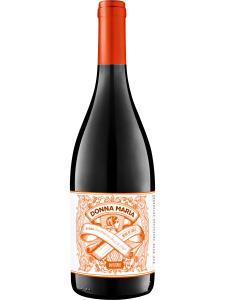The Elqui Valley wine region is located 250 miles (400km) north of the Chilean capital, Santiago, at the very southern edge of the Atacama Desert. Its latitude of 29° makes it Chile's northernmost wine region, for now at least; the country's determined wine pioneers are now setting their sights as far north as the Atacama. Traditionally the region focused exclusively on producing Chile's trademark brandy, Pisco, but today Elqui Valley vineyards are producing bright, intensely aromatic wines, most notably from Sauvignon Blanc and Syrah.
As might be expected in an arid, largely uninhabited region surrounded by desert, the valley is hot and dry; irrigation is essential in all vineyards here. The Elqui province is famous for its bright sunshine, pure air and clear skies (the region is home to a number of astronomical observatories). Vineyards here receive far higher levels of solar radiation than any European wine region, and this seems to translate into the wine style. The vibrant intensity of Elqui Valley wines, when yields and potential alcohol are kept in check, can be quite remarkable.
The secret to successful viticulture this close to the equator is altitude. Elqui's vineyards sit up to 6550ft (2000m) above sea level, which means that the warm, bright, days are followed by cool, fresh nights. This diurnal temperature variation lengthens the grape growing season, which in turn allows the grapes time to develop intense varietal character, while retaining refreshing levels of acidity.
Wineries all over Chile now focus heavily on the altitude of their vineyards. Altitude has become as much a marketing tool as a key element of terroir. The effect is even more obvious across the border in Argentina, most notably in Salta.
There is no major north-south valley here between the coastal range and the Andes Mountains – just a series of spectacular transverse valleys that deliver precious Andean melt-water to the region's vineyards. Almost all of the region's agriculture centers around these valleys. Table wine was first produced here in the 1990s, when Chilean producers began to seek out new regions beyond the obvious locations in the Central Valley. The region is now home to 700 acres (280ha) of vines, located mostly alongside the various rivers; irrigation is essential in this hot, dry region.
The name Elqui means 'narrow valley' in the local Quechua language, which perfectly sums up to local geography. Mountains line the valley on either side, rising up to over 3300ft (1000m) in places. The soils here are rocky and thin, with some chalky components, and their good drainage (combined with low annual rainfall) means that grape growers are able to control yields and vegetation growth through irrigation. Closer to the Pacific Ocean at lower altitudes, the soils are more clay- and silt-based.
Alongside Sauvignon and Syrah, the Elqui Valley is also home to plantings of Chardonnay, Carmenere and Pedro Ximenez. It is one of Chile's up-and-coming regions, and its wines are attracting attention from international critics and consumers alike.


